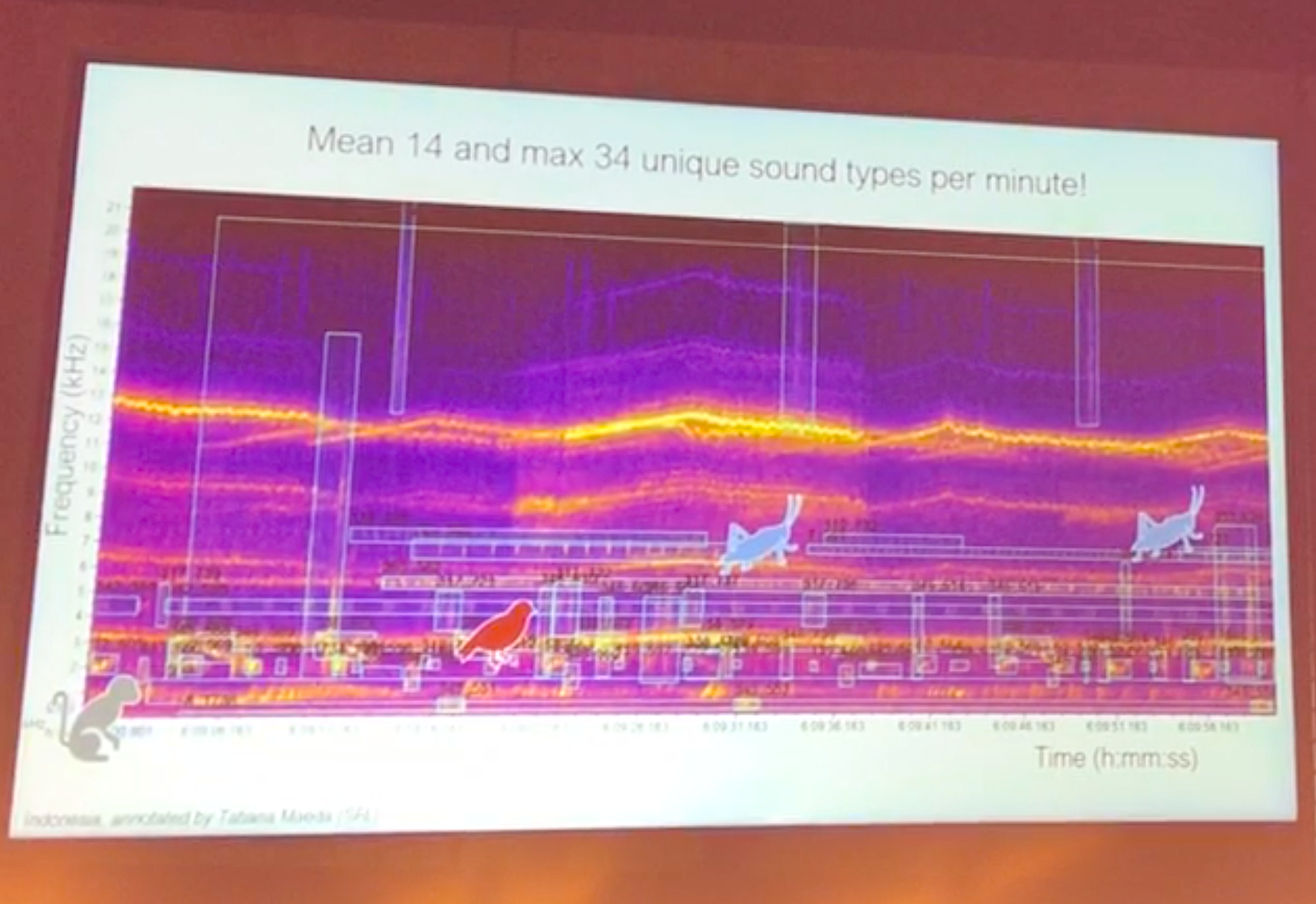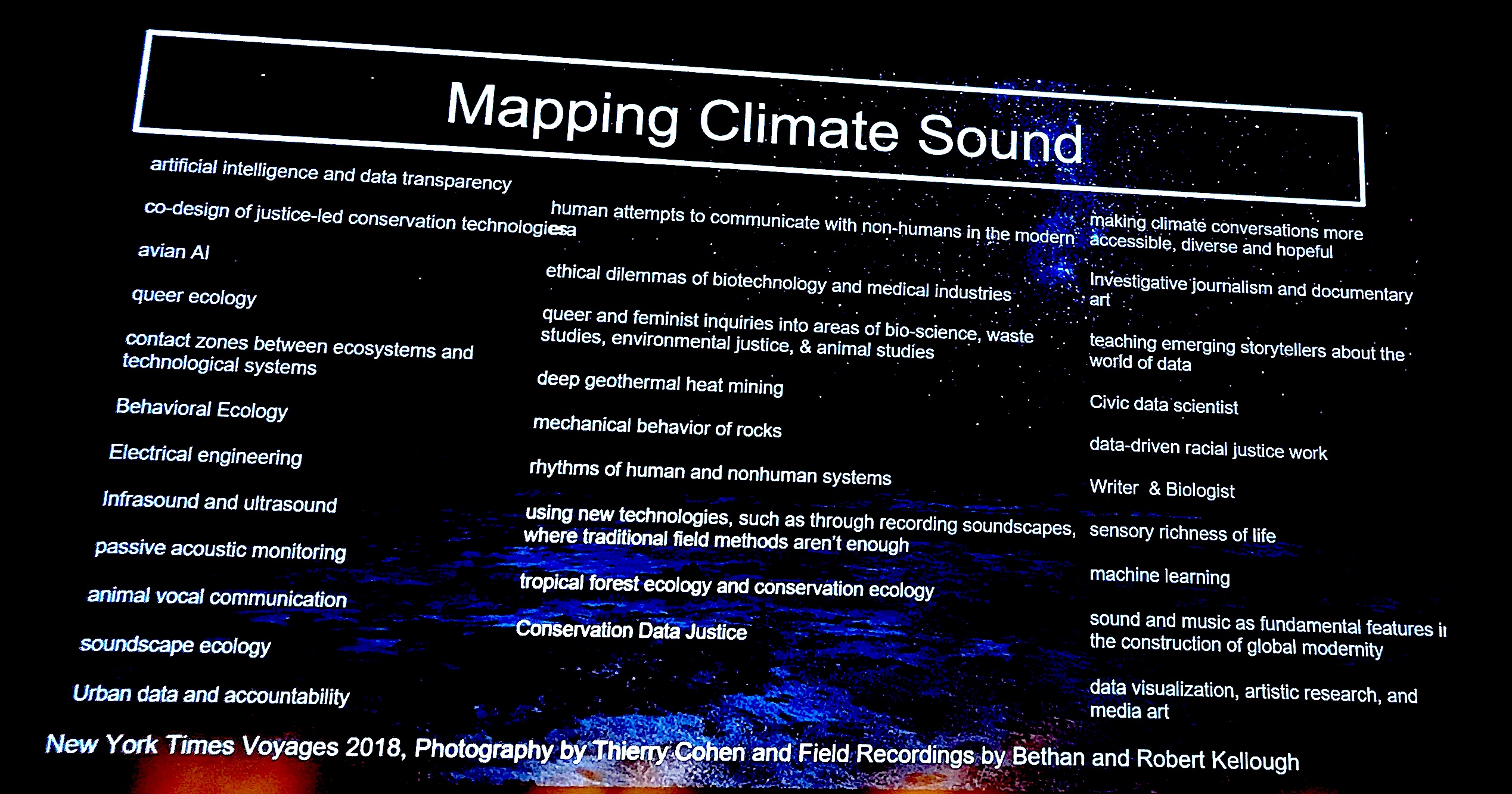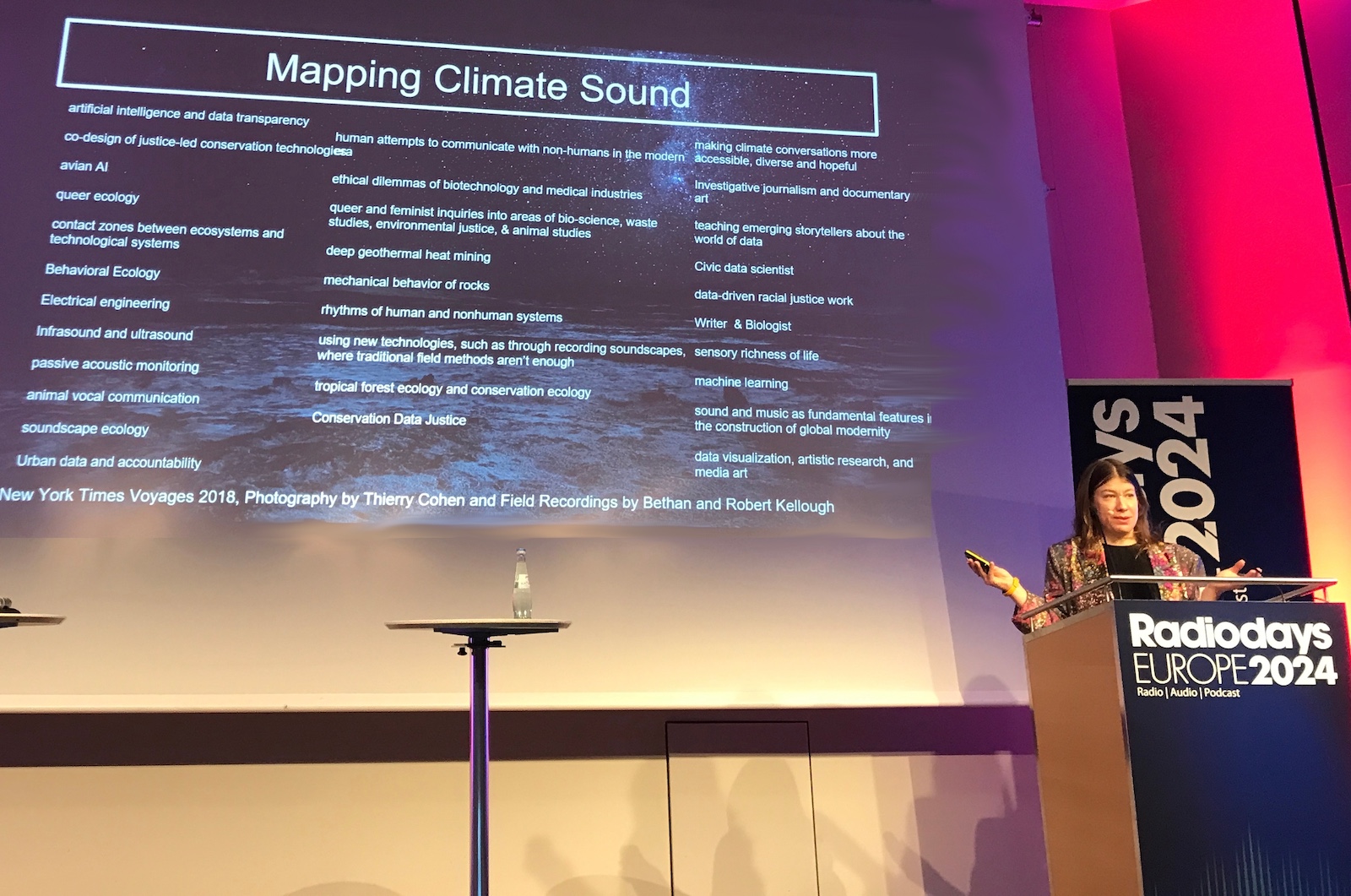“Climate sound can be incorporated into reporting as a way of keeping the interest and attention of the audience,” said Kara Oehler from Freie Uiversitët Berlin, explaining an environmental audio mapping project.
Speaking at the Radiodays Europe 24 conference, she described how climate sounds are captured with microphones and used to show the impact of climate change and the impact of decisions taken to alter the natural environment.
Audio technology is used to monitor biodiversity to see the impact of changes to environments. Bio diversity data needs to be collected to keep companies accountable for the changes they make to environments.
The acoustic niche hypothesis describes how different species take up different audio frequencies and is being used to track climate change with audio. Oehler gave an example of how a soundscape recorded before some of a forest was logged, compared with a soundscape taken one year later . The comparison of the two recordings shows the reduction of biodiversity.
Combining the audio wave forms with illustrations of the animals heard, provides a visual reference for soundscapes captured at various times in the sound mapping project.
Using the tool, the researchers were able to show that the condition of the forest did not return to its original level after logging. Even after the logged trees were replanted, the audio soundscape proves that the variety of wildlife did not return.

Kara Oehler’s work is undertaken at the Institute for Climate Sound & Society at Freie Uiversitët Berlin
The mission of the Institute is to build an interdisciplinary community of practice that brings together sound-based scientists, technologists, scholars, archivists, storytellers, data journalists, curators, and media artists to expand research impact, build new research tools, and de-center humans in public culture.


